While some chickeners let birds roam free around their property, for those of us who live with the threat of predators it's a better idea to give our flock protection when outdoors. A chicken run is a dedicated and protected chicken space outside the coop.
Basically, a chicken run is a structure with enclosed walls that is attached to the coop. A door gives the chickens access to the run from the coop. While the run can be made from just about any material I recommend a simple wood and wire structure.
My chicken run is built with pressure-treated 2 x 4 lumber and covered with a combination of chicken wire and welded-wire fencing. It has four walls and a top; it's covered with panels to keep the rain out. The corner pieces are 4 x 4 posts. Because my coop is inside the barn the run is attached to the side of the barn.
I framed the lumber into a big box. My run is eight feet wide and 12 feet long, dimensions that allowed me to buy wood in 8-ft and 12-ft lengths and minimize cutting. The construction is similar to that for a shed or a house. For the walls there's a bottom piece and a top piece and vertical joists in between. The walls of a shed or house need to support heavy plywood and a roof so the joists are often spaced 16 or 18 inches apart. The chicken run walls are wire so the joists can be spaced much wider apart. Mine are at four-feet intervals.
Of primary concern is to make the run as secure as the coop. That means keeping predators out and chickens in. Identifying potential predators is an important step. I have dogs, cats, coyotes, foxes, and hawks that would all love a chicken dinner. Many people also have to be concerned with raccoons, weasels, possums, snakes, and bears.
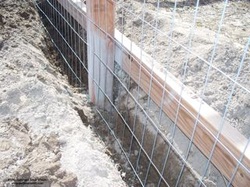
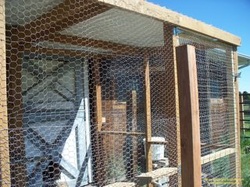
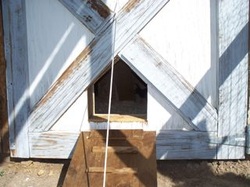
The door between the coop and run doubles as a ramp to help them run up and down for entry. It's on a hinge so I can swing it up at night with a cord that I access from inside the barn. This adds an extra barrier to any animal that might make it through the run's walls and want to get inside the coop.
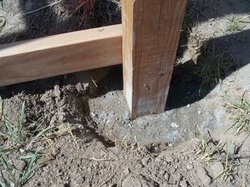
To give the run extra strength and stability consider burying the corner supports and anchoring them in concrete. For freestanding, permanent structures this makes the run as strong as it can be. If you plan to move your coop the run needs to be portable too so permanent anchoring should probably be avoided, but be aware it's not as strong.
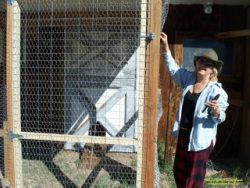
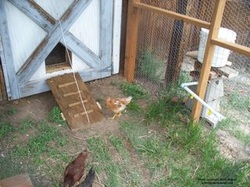
I'd overlooked installing a roosting pole when building the run and I came out one day to see a chicken resting on one of the horizontal wall supports. Adding a long branch to the inside gives them something to rest on.
When constructing the run consider drainage around it. You don't want to discover too late that you built your run in a depression that gets all of the rain or snow run off. Chickens don't do well in mud. If you're forced into a bad spot, consider adding a trench or drain around it to divert excess water.
Chickens also don't like to walk in snow. I plan to add 18-inch tall siding all around the base in the fall. This will help reduce the amount of snow blowing in and still allow them to spend time outside even on cold days. The roof on my run has been very efficient at keeping it dry on rainy days and should help keep snowfall out, but wind is still an issue and protecting the birds from snow drifts is beneficial.
I'm confident that my chicken run will protect them from every conceivable threat. The only thing I'm remotely concerned about is a bear problem, but so far we've seen no signs of bears in this area. They are the only creature strong enough to break through the run. Aside from a concrete and steel structure, bears can get into just about anything else. I'm not worried about it though; I dealt with the issues I have.
After initial construction we decided to board horses so they're a minor issue now. While not a chicken predator, horses will rub or lean against the run walls and add unnecessary stress. So I added buried fence posts a few inches from the run walls and will add horizontal boards to make a barrier fence to keep the horses from causing damage.
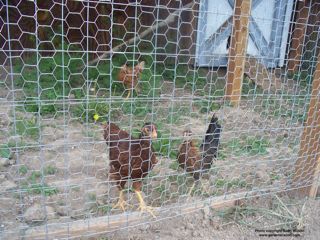
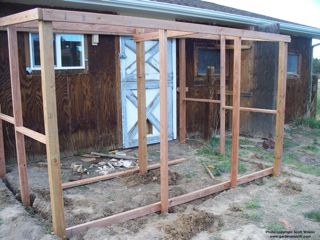
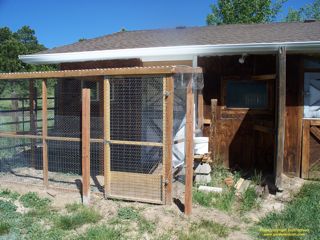
 RSS Feed
RSS Feed